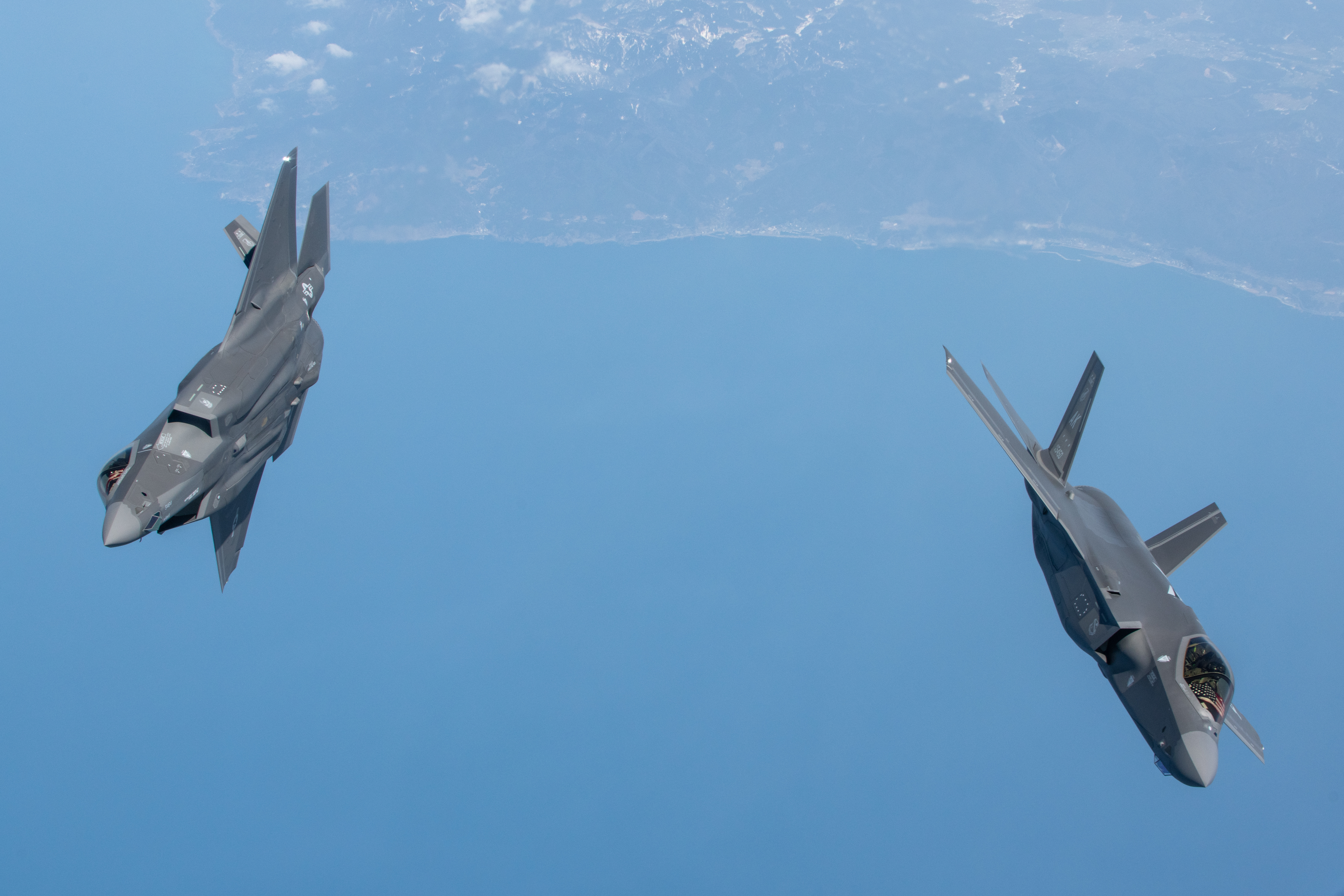
South Korea is expected to purchase 20 new F-35A Block 4 Lightning II stealth fighters for the Republic of Korea Air Force (RoKAF) – raising questions about the future of the South Korean aircraft carrier program.
A decision is expected to be announced later this month, according to local media reports, with the aircraft slated to be introduced no earlier than mid-2020s. But these plans indicate a wider shift in the defense posture of South Korea and signals a change in the threat priorities as viewed from Seoul.
There is speculation that the advance of the F-35A project will come at the expense of Republic of Korea Navy (RoKN) plans for the procurement of a 30,000t light aircraft carrier – dubbed CVX – and a similar accompanying number of about 20 F-35B variant short take-off and vertical landing aircraft.
The stealthy F-35As for the RoKAF are designed to be used as pre-emptive strike and counter-strike assets that will target North Korean military installations and nuclear weapon launch facilities and storage sites. This brings the focus on potential threats directly on the Korean Peninsula and South Korea’s unstable neighbor. The RoKAF already has 40 F-35A Block 3 aircraft in-service.
Meanwhile, a light carrier is designed for operations against more distant threats in support of expeditionary operations further away from South Korea. The decision to buy the F-35As will likely mean a delay in the procurement of CVX. Both sets of aircraft are estimated to cost about $3 billion.
The change in priorities is a result of the recent change in government in Seoul, where, following elections in March, President Yoon Suk-yeol, from the People’s Power party, replaced the former President Moon Jae-in, from the Democratic Party of Korea.
Kim Jae Yeop, a defense and senior researcher at Sungkyun Institute for Global Strategy (SIGS), Sungkyunkwan University told USNI News that CVX had been a “landmark project” for Moon “who actively sought to expand the focus of Korea’s defense modernization beyond threats from Pyongyang.”

Kim explained that one of the driving forces behind this expansion was to enable the RoKN to stand up to Japan following trade disputes and a naval clash in the East Sea in 2019. Moon wanted the navy to have its own carrier to confront the naval power of Japan after it decided to convert its two Izumo-class helicopter carriers into light carriers.
As a result, South Korea invested in Aegis-capable destroyers, new classes of submarine and a pair of Landing Platform Helicopter (LPH) amphibious assault ships over the past two decades.
Yoon seems to have very different priorities for defense modernization.
“His government believes that bolstering deterrence on Pyongyang’s growing arsenal of weapons of mass destruction including nuclear weapons and ballistic missiles, is more important and urgent,” Kim said.
That would mean the F-35A decision is the better option, Kim said. However, the RoKAF is limited by older aircraft.
The RoKAF has more than 400 aircraft in its inventory, but these include more than 100 1970s- and 1980s-vintage F-4 Phantom and F-5 fighters.
“These fighters are blamed for the loss of air force pilots due to a number of flight accidents,” Kim said.
These will be replaced with the introduction of indigenously built aircraft the KF-21 from 2026 and FA-50 light combat fighter as well as the F-35, he said.
The CVX decision has been controversial since its announcement in the Mid-Term Defence Plan (MTDP) 2021-2025 published in 2020. It is the centrepiece of the RoKN’s ambition to become a blue water navy. It failed secure funding, despite a memorandum of understanding signed in October 2021 between Korean Aerospace Industries and Hyundai Heavy Industries to design and develop CVX.
Kim said he believes that because it was assumed CVX would conduct operations in and around the Korean Peninsula, such as along the littorals of North Korea or near disputed islands like Dokdo (or Liancourt Rocks), it was not the best use of an expensive asset when alternatives were available.
The RoKN will likely need to highlight the advantage of a light aircraft carrier in order to have more support for the program, Kim said.
“This includes CVX’s contribution to multinational missions with the U.S. Navy and other regional allies and partners,” he said. “In this case, the CVX may carry out a greater role in dealing with the maritime threat from China, rather than Japan.”





